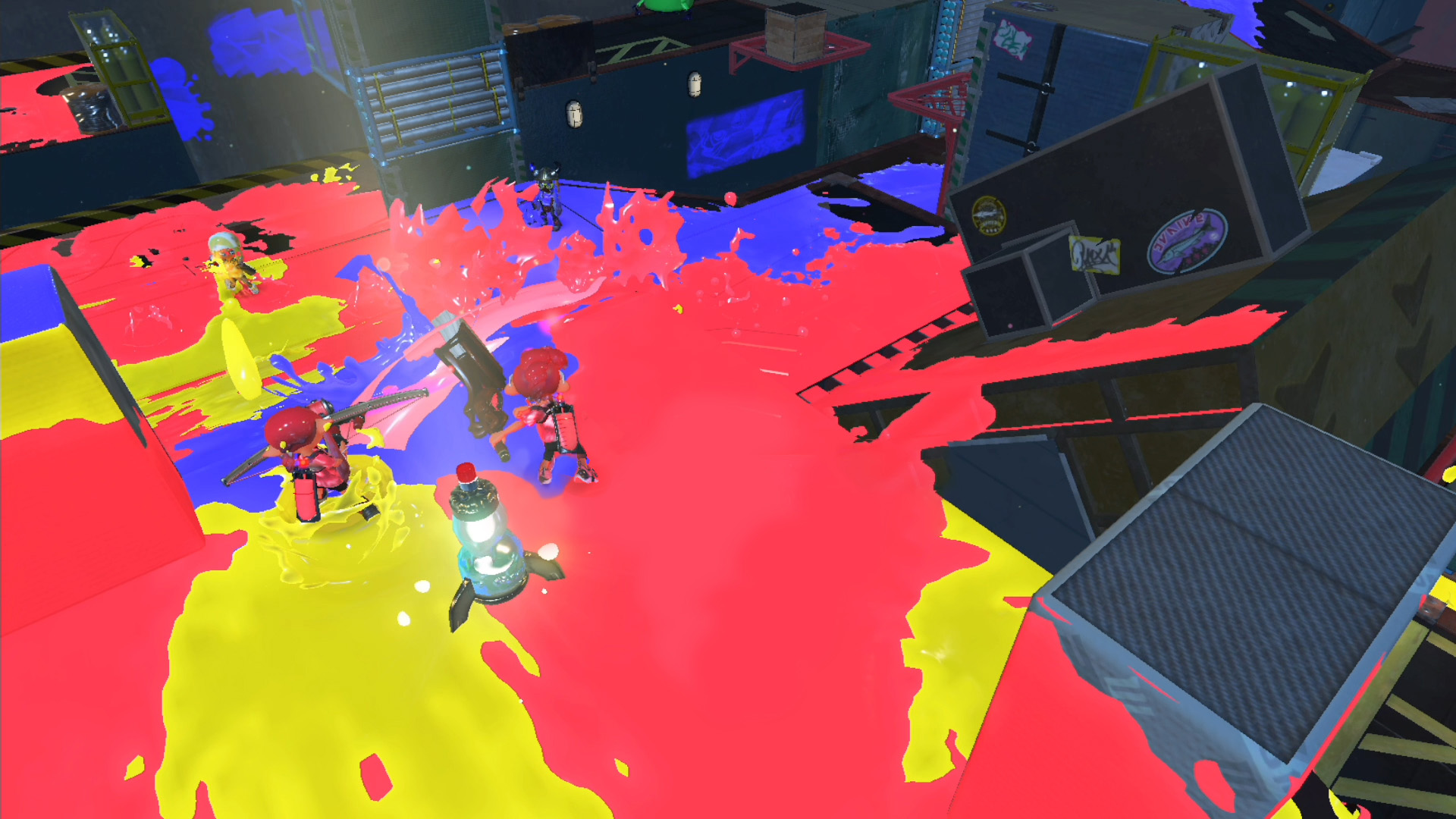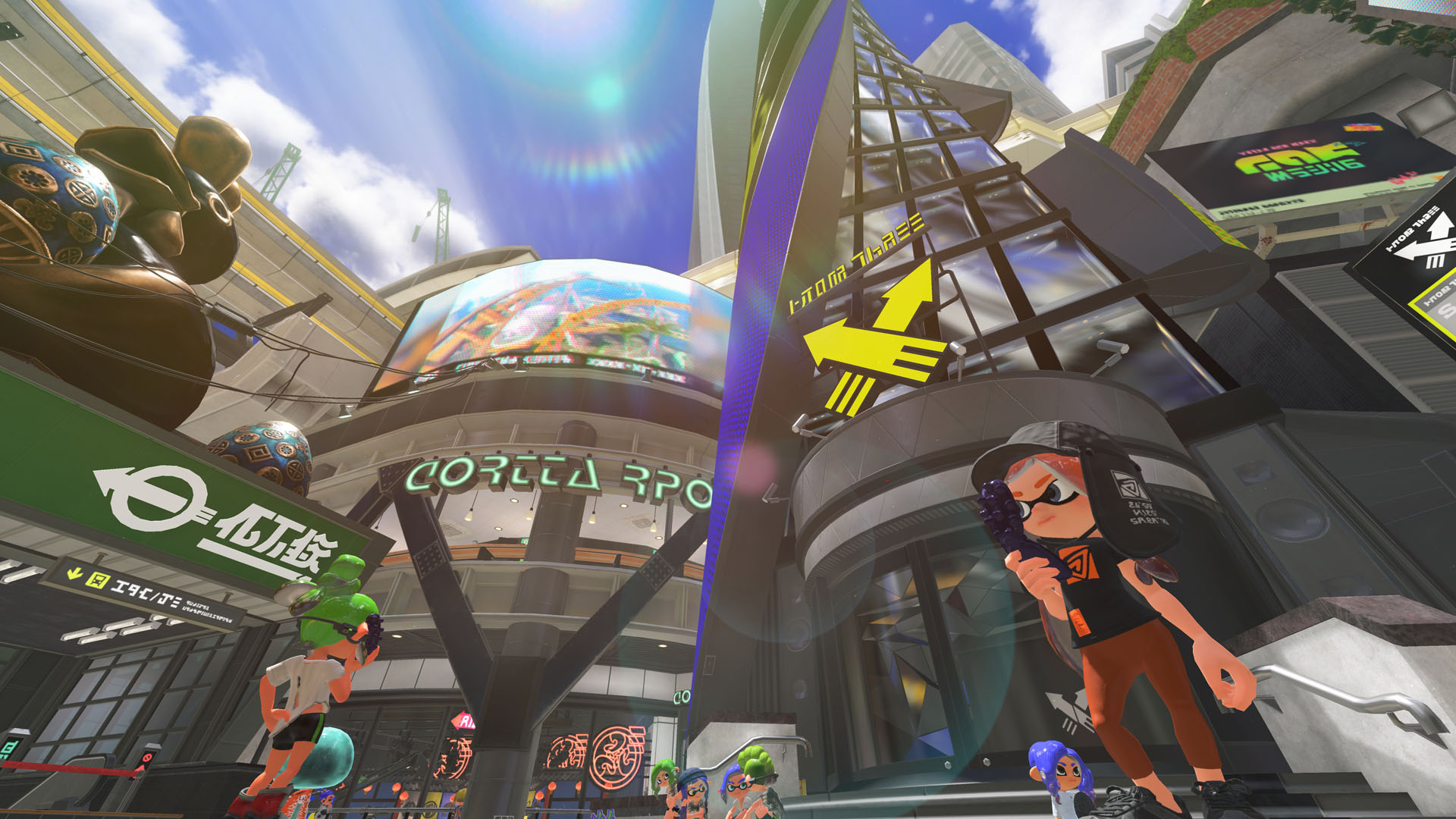Why change a formula that wasn’t broken to begin with?
This is the crucial fact to note about Splatoon 3, Nintendo’s very familiar sequel to Splatoon 2. While the inventive third-person shooter is a clear step above 2017’s entry in the series and 2015’s Splatoon on the Wii U, it’s also not that different. You’re still a squid kid, and your ultimate goal remains splatting brightly coloured ink across the map.
First, let’s take a look at Splatoon 3‘s single-player mode, a feature I was equally impressed and disappointed with. My dream of an open-world Splatoon based on early teasers was quickly dashed as I realized the title’s campaign is very similar to Splatoon’s and Splatoon 2’s. There’s a gated overworld where you progressively unlock new areas by removing the ooze covering the map, alongside the familiar, traditional level structure and upgrade system I’ve come to expect from the series.
Without giving anything away, there’s a substantial story focused on the world Alterna, but if the series’ narrative hasn’t clicked with you in the past, don’t expect Splatoon 3 to change that. Still, it’s compellingly weird, and its new characters are memorable. This time around, boss battles feel more inventive (and difficult) than the big baddie foes in Splatoon and Splatoon 2. You also get access to a new “Smallfry” fish-like companion that helps you ink hard-to-reach areas on the map and take out certain enemies. While a welcome twist on Splatoon 3‘s core gameplay, the new Smallfry doesn’t do much to shake up the series’ formula.

For better or worse, there are also several features borrowed from Splatoon 2‘s substantial Octo Expansion, like taking levels on with less powerful weapons for higher rewards. Speaking of level goals, I found Splatoon 3‘s tasks to be more varied and challenging than what I’ve encountered in past Splatoon titles. There’s genuinely genius-level design in Splatoon 3, and I even managed to find myself stuck on several stages, only to encounter the coveted “ah ha!” moment after a dozen or so minutes of experimentation (usually, this involved falling through a grate I didn’t initially notice).
It’s worth noting single-player mode still works as a great intro to Splatoon 3‘s core mechanics, including getting the hang of new weapons like the extremely fun ‘Splatana,’ an ink-covered katana that flails paint around and the ‘Tri-Stringer,’ a timed weapon that shoots out three projectiles (echoing what Brad Shankar said in his hands-on, the Tri-Stringer will likely become my favourite multiplayer weapon). Overall, Splatoon 3‘s single-player is lengthier and more substantial than what’s been offered in past entries in the series, but it still feels like an elaborate training exercise designed to prepare you for the game’s main multiplayer attraction.

I need to spend far more time with Splatoon 3‘s multiplayer mode. While I have logged a few hours in ‘Turf War,’ the game type that tasks you with painting the map in your team’s colour, and played around with ‘Salmon Run,’ the title’s horde mode that returns from Splatoon 2, Nintendo’s press multiplayer play sessions were limited. What I can say is that I’m fond of the ability to select where you want to spawn in your starting area since it helps prevent base camping, a frequent issue in the first two Splatoon titles.
I’ll add more to this story when Splatoon 3 is publically available and I can get into more multiplayer matches. That said, the groundwork for an excellent multiplayer title seems to be present, although you’ll still be forced to deal with Nintendo’s archaic online service to get in on the splatting action. It’s also unclear if Splatoon 3 builds meaningfully on Splatoon 2‘s multiplayer.

On the same note, I also haven’t spent time with Splatoon 3‘s ‘Table Turb Battle,’ a Tetris-inspired card game, but I will add my thoughts on the feature alongside my multiplayer impressions in the coming days.
There are a few notable missteps in Splatoon 3, unfortunately. The game doesn’t feature local co-op or multiplayer, though you can play locally across two different Switch consoles if you both own a copy of the game. This, once again, has killed my dream of playing the game with my partner. I understand not adding local co-op/multiplayer is likely tied to the Switch’s hardware limitations, but it still doesn’t make the feature not making it into Splatoon 3 any easier to swallow. More so than ever before, Splatoon 3 feels like a game designed to be played locally with friends.
On the plus side, the third entry in the Splatoon series is one of the best-looking titles on the Switch. Everything from its bright-coloured ink to its inventive maps looks incredible, and at times, it’s difficult to believe Splatoon 3 is running on the rapidly aging Switch.

Splatoon 3 often feels like elaborate Splatoon 2 DLC, but is that such a bad thing? The series’ core swimming, inking and splatting mechanics work so well for a reason, and in an industry full of very similar shooters, its simple yet deceptively deep and competitive gameplay manages to stand out.
Despite Splatoon 3‘s shortcomings, the third entry in the series cements the franchise as one of Nintendo’s best recent original franchises.
Splatoon 3 releases on the Nintendo Switch on September 9th for $79.
Image credit: Nintendo
MobileSyrup utilizes affiliate partnerships. These partnerships do not influence our editorial content, though we may earn a commission on purchases made via these links that helps fund the journalism provided free on our website.

